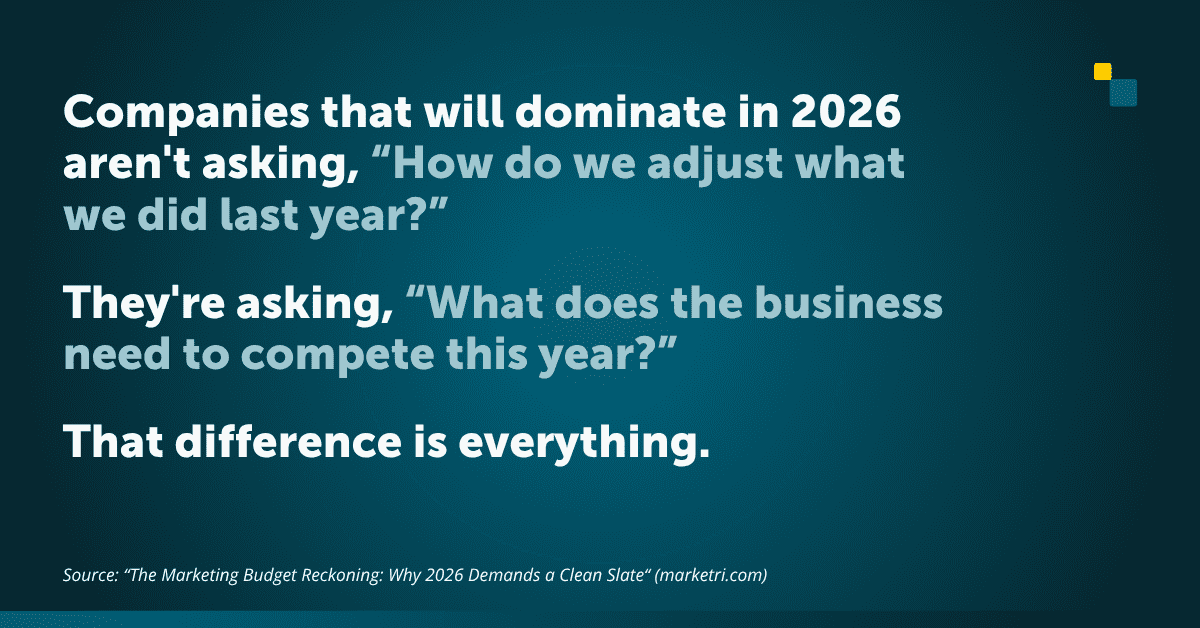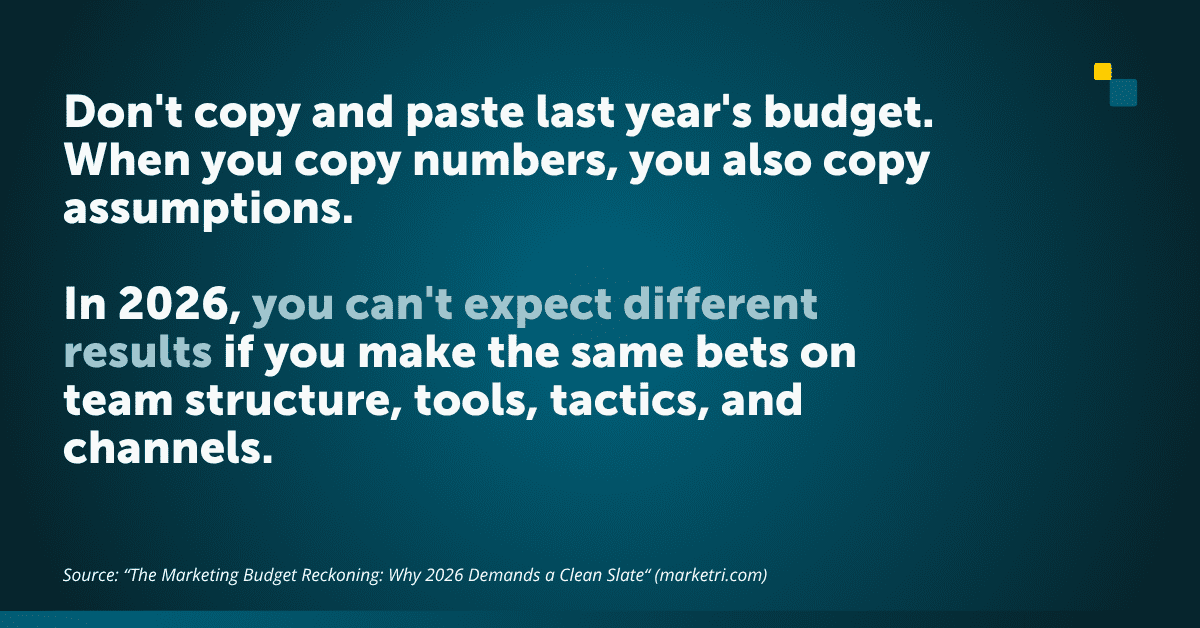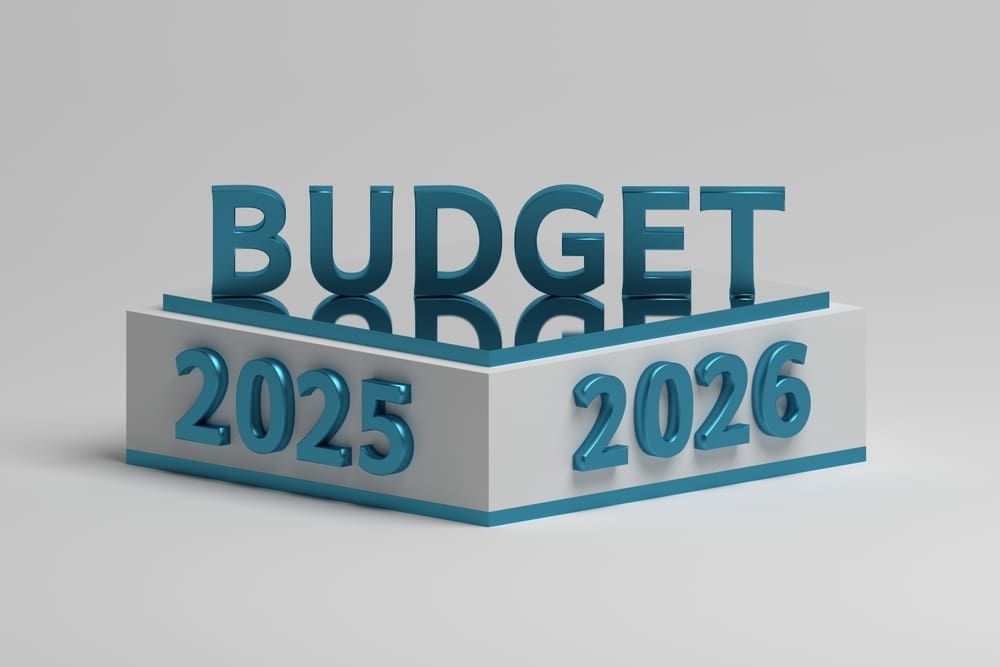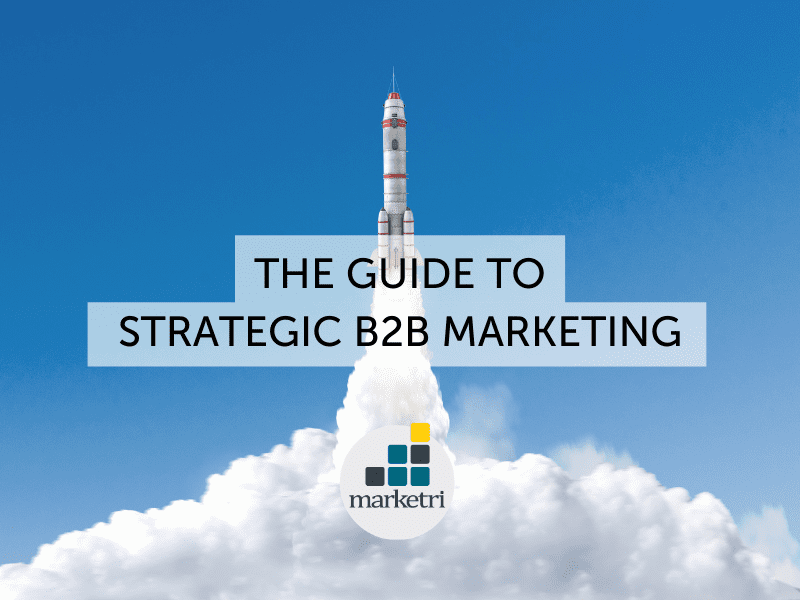The Marketing Budget Reckoning: Why 2026 Demands a Clean Slate
Picture this: It’s budget season, and your marketing team slides that familiar spreadsheet across the table. Same line items as last year, maybe with a modest 5–10% increase. Easy math, right?
Wrong. Dead wrong.
If there’s one thing I’ve learned from countless conversations with marketing leaders this year, it’s that 2026 isn’t just another year requiring incremental adjustments. It’s the year that will separate the companies ready to compete from those that will fade into irrelevance.
Here’s what should make every CEO and CFO sit up and pay attention: AI adoption in marketing strategy has more than doubled in just two years, jumping from 28% in 2023 to 63% in 2025. Meanwhile, Forrester reports that 83% of B2B marketing leaders plan to increase marketing spend this year.
But here’s the reality check that most are missing: throwing more money at marketing won’t automatically make it perform better in 2026. The old formulas are broken.
The Rolling Forward Trap
Most organizations treat marketing budgets like a subscription service—just auto-renew and move on. They carry forward the same line items, the same assumptions, the same playbook that worked (sort of) last year.
But what worked in 2023 and 2024 won’t just be ineffective in 2026–it could be catastrophic.
Think about it this way. When was the last time you personally used Google search the same way you did two years ago? One marketing executive I recently spoke with put it perfectly: “I will never go back to Chrome. I will never go back to Google search.” She’s using AI-powered browsers that summarize answers, automate LinkedIn prospecting, and handle complex research tasks that used to take hours.
If marketing leaders are changing their search behavior this dramatically, what does that mean for traditional digital marketing strategies?

The Three Investment Priorities That Can’t Wait
1. Tech Spend That Actually Moves the Needle
Many companies are seeing profound marketing ROI on tech investments in AI. In fact, Stanford’s 2025 Artificial Intelligence Index Report found that 71% of respondents using AI in marketing and sales reported revenue gains. Exciting, right? But before you start adding shiny new AI tools to your budget, take a beat.
Your tech spend needs to reflect how marketing actually works in 2026, not how it worked last year. That means accounting for more than just sticker prices. Factor in implementation planning, training, and ongoing optimization. Many of the most powerful marketing technologies available today require substantial investment in getting them right, not just getting them running.
Map out exactly how new systems will be used, who will manage them, and how they connect to your broader growth strategy. Otherwise, you’re just buying expensive software that sits unused.
2. Upskilling: The Non-Negotiable Investment
You need a team that can navigate and win in this new environment. If your marketing team isn’t fluent in AI-powered tools and strategies, that knowledge gap will compound every month until you address it.
Your 2026 budget must include dedicated investments in AI education, whether through specialized workshops, certifications, or hands-on pilot programs. This isn’t a nice-to-have; it’s infrastructure investment, like modernizing your sales outreach when everyone stopped using landlines.
3. Workforce Structure Revolution
Here’s where it gets interesting. The old equation was simple: current headcount + more people = growth. That doesn’t hold anymore.
With the right flexible support models, companies are growing while keeping headcount steady (and in some cases, reducing it). For example, instead of five full-time roles, you might need two strategic hires paired with a fractional marketing team.
When you can access senior-level expertise for 10 hours a week instead of hiring a full-time specialist, you free up significant budget for the tech and training investments that drive real competitive advantage.
Here’s the critical insight: marketing budgeting and marketing staffing aren’t separate decisions. They’re deeply interconnected. How you staff determines how effectively you can execute, which directly impacts your return on every dollar spent.
The Flexibility Imperative
2026’s pace of change means your budget needs unprecedented flexibility. Avoid long-term contracts. Keep technology commitments short. Why? Because the marketing technology landscape is shifting so rapidly that the platform you commit to today might be obsolete by mid-year.
Companies with robust AI capabilities are already implementing agentic AI–systems that perform entire workflows on behalf of humans. If your competitor gains that efficiency advantage while you’re locked into yesterday’s tools, the gap becomes impossible to close.

Beyond the Numbers: Your Statement of Intent
Your marketing budget is more than a financial document. It’s a statement of intent. It reflects what you believe about growth opportunities, smart investment, optimal team design, evolving customer behavior, and competitive positioning.
The companies that get this right won’t just survive 2026; they’ll thrive while their competitors wonder what happened. The companies that auto-renew their 2025 approach will become cautionary tales.
My recommendation? This is the one year where you need to start with a blank template instead of rolling last year’s budget forward. Force yourself to justify every line item from scratch.
Ask hard questions:
- How much of our current team’s responsibilities can be reimagined through AI?
- Are we investing in the infrastructure needed to compete in an AI-driven marketplace?
- Does our budget reflect where our customers actually engage with content today?
The choice is yours, but the time to act is running out. You can use your budget to show you’re sticking with familiar approaches, or you can use it as proof that you’re actively leading your organization into the future.
The window for strategic advantage is narrowing. Make it count.
Ready to Modernize Your Marketing Budget?
Schedule a discovery call and let’s discuss building a marketing budget that positions your business to lead in 2026.





